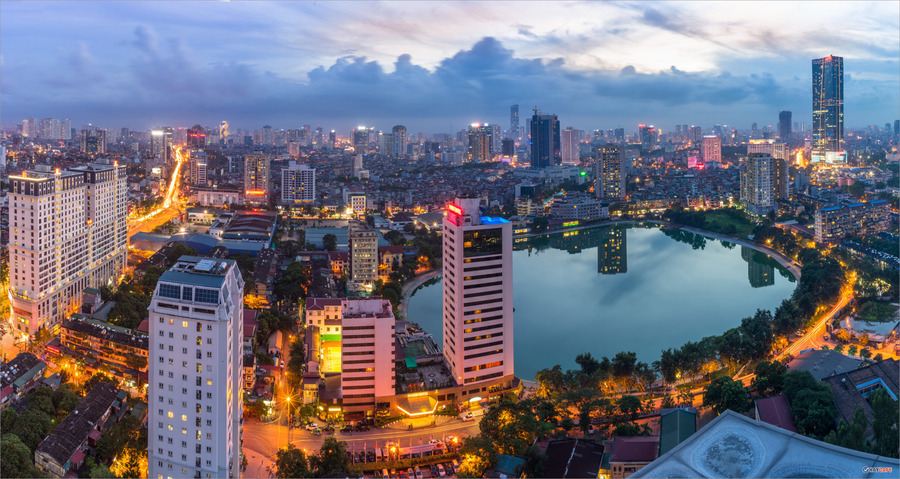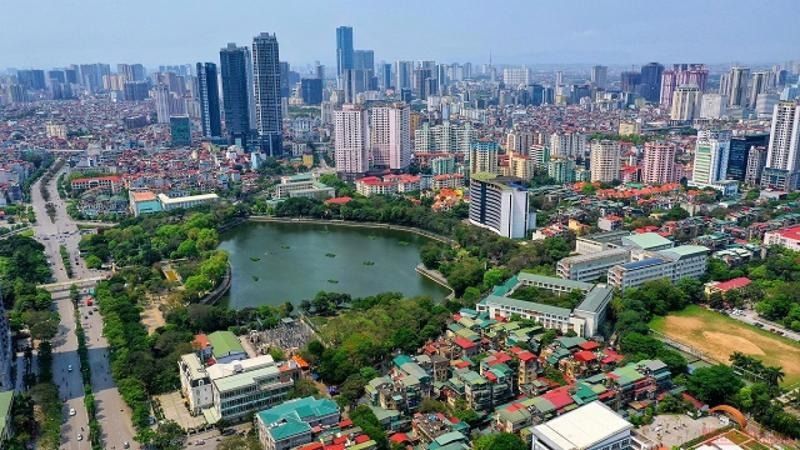Hanoi Workforce Characteristics: 5 Key Insights

Jun 21, 2025
Last updated on Jun 21, 2025
To truly understand Hanoi workforce characteristics, you need to look beyond the impressive headlines: 8.3 million residents and Vietnam's premier educational hub. Beneath these compelling statistics lies a complex talent landscape that many business leaders haven't fully decoded—one that directly impacts your ability to recruit effectively and keep your best people.

Key takeaways
- Hanoi’s workforce is rapidly shifting from agriculture to services and manufacturing, creating massive opportunities for forward-thinking companies
- While 74.25% of workers now have formal training (up from 71.1%), critical skill gaps remain in technical and mid-level positions
- Only 1 in 4 Hanoi workers feel satisfied with their current pay, yet they value job security over frequent job changes compared to other regions
- Companies must develop custom strategies to bridge skill gaps while meeting rising salary expectations
- Workplace culture and company reputation matter more than ever—74.1% of Hanoi workers rank these factors as top priorities
Hanoi’s workforce is experiencing a dramatic evolution, modernizing rapidly while revealing unique tensions around skills, expectations, and work culture. Mastering these five core dynamics will give your company the strategic edge needed to win in Vietnam’s most competitive talent market.
A workforce in rapid transition
Vietnam’s capital is undergoing a quiet revolution that’s reshaping its entire employment landscape—creating unprecedented opportunities for savvy companies while challenging traditional recruitment approaches.
The numbers tell a compelling story: agricultural workers now represent just 16.4% of the workforce (2019-2021), as Hanoi transforms into a services and manufacturing powerhouse. This isn’t just economic evolution—it’s the birth of Vietnam’s knowledge economy, centered right in the capital.
The service sector boom spans finance, healthcare, education, and tech, reflecting Hanoi’s role as the country’s economic nerve center. Meanwhile, the industrial sector has exploded with new parks and export zones implementing cutting-edge workforce models, particularly in electronics, machinery, and high-tech manufacturing.
Take Hoa Lac High-Tech Park as a prime example: 94 projects, 52 operational facilities, nearly 9,000 students, and roughly 13,000 workers. This single development showcases the explosive growth in Vietnam’s tech sector and the massive demand for skilled professionals.
Education-rich but skill-mismatched
Hanoi boasts world-class educational infrastructure, yet the talent pipeline reveals frustrating gaps that smart companies are learning to navigate and exploit.
The city dominates Vietnam’s educational landscape with its concentration of top universities, colleges, and vocational centers. Local students consistently win national and international academic competitions, and the city leads in both comprehensive and specialized education quality.
The progress is real: trained workers jumped from 71.1% to 74.25% in just three years, while workers with formal credentials rose from 50.1% to 54.05%. With 99.2% literacy rates and 97.2% school attendance—both national highs—Hanoi’s educational foundation is rock-solid.
But here’s the catch: there’s a massive imbalance between university graduates and mid-level technical workers. Companies consistently report that new hires need extensive retraining or end up working outside their field of study. The gaps are particularly acute in foreign languages, teamwork, workplace discipline, and essential modern workplace skills.

A hypercompetitive talent marketplace
Hanoi’s job market moves fast and fights hard, demanding sophisticated strategies from companies serious about winning top talent.
With 8.33 million people and 2.2% annual population growth, Hanoi offers abundant human capital for companies ready to compete. The demand spans services, manufacturing, and technology, creating rich opportunities but fierce competition for the best candidates.
JobsGO data reveals the market’s intensity: 58,807 job postings in 2024 alone, up 13.6% year-over-year. Sales and business development roles lead the pack with 4,113 positions, while customer service exploded 71.6%.
Here’s an interesting twist: Hanoi’s labor force participation rate sits at just 64.6%—well below the national average. Why? The city’s concentration of educational institutions means many working-age residents are students rather than active job seekers. This creates unique recruiting dynamics that savvy companies can leverage.
High expectations, low satisfaction
Understanding what drives Hanoi’s workforce reveals both challenges and opportunities for companies willing to step up their game.
Income levels in Hanoi outpace most Vietnamese cities, but significant gaps persist between sectors and urban versus suburban areas. The reality check? Only 25.9% of workers feel satisfied with their current compensation—a sobering figure when compared to national salary benchmarks.
The mobility data is telling: 46.1% would seriously consider switching jobs for a 10-20% salary bump. Even more striking, 63.7% of job seekers rank competitive pay and benefits as their top priority, reflecting broader Vietnamese workforce trends in the modern era.
Beyond compensation, workplace conditions remain challenging in manufacturing and construction, with pollution and safety concerns affecting worker health and satisfaction. These factors create both retention challenges and opportunities for companies that prioritize worker well-being.
Strategic policy shifts creating new opportunities
Hanoi’s government is making bold moves to transform its workforce, creating openings for companies that understand and align with these policy directions.
The city’s Program 04-CTr/TU focuses on “developing culture and society while improving human resource quality”—one of eight major initiatives from the latest Party Congress. This isn’t just political rhetoric; it’s driving real investment in workforce development.
Hanoi has identified six key talent categories for special treatment: outstanding graduates, PhD researchers, skilled professionals (doctors, teachers, experts), athletes, and artists. These groups receive financial support, special benefits, and priority access to major city projects.
The city is also pushing hard on digital transformation, building digital infrastructure for education and HR management while improving career guidance systems. This creates opportunities for companies that can align with these modernization efforts.

Winning strategies for the Hanoi market
Success in Hanoi requires abandoning one-size-fits-all approaches in favor of strategies custom-built for this unique market’s characteristics.
- Build your pipeline: Instead of competing for ready-made talent, partner directly with universities and vocational schools to create programs that produce job-ready graduates. Hanoi’s three-way partnership model (school-enterprise-government) has proven effective in connecting workers with companies, giving early adopters significant advantages.
- Lead with compensation: With only 9.3% of workers willing to move for salary increases below 10%, your pay packages need to be genuinely competitive. Study Vietnam’s fastest-growing salary sectors and price accordingly—this isn’t the market for budget approaches.
- Invest in culture and reputation: Hanoi workers value workplace environment and company reputation (74.1% rank these factors highly), alongside the strong sense of community and colleague relationships (44% satisfaction rate). Building an employer brand that emphasizes positive culture, empowerment, and professional growth delivers measurable ROI in this market.
Winning in Hanoi requires more than deep pockets or impressive credentials. You need strategies specifically designed for this market’s unique combination of high expectations, skill gaps, and cultural priorities. Companies that invest in professional workforce assessment and flexible staffing solutions position themselves to truly understand and capitalize on Hanoi workforce characteristics. Ignore these market realities at your own risk—the cost isn’t just wasted recruiting dollars, but lost competitive advantage in Vietnam’s most important talent market.

Solve your HR problems!
6th Floor, Star Building, 33 Mac Dinh Chi, Saigon Ward, Ho Chi Minh city, Vietnam




